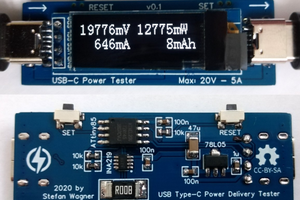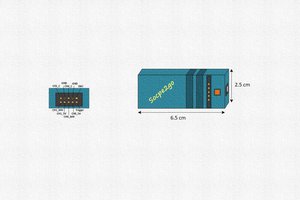PLEASE:
Isolate [cut} traces to the Dimmer Switch [USB power} and the Dimmer Potentiometer
(I also removed the main AC power wires - for more room in the box)
.
I orientated the the standard light switch such that in sends the proper
signal to the microcontroller IO pin when it is pointed at the IR detector,
This switches from Analog Pot input to controller to the IR input to be decoded.
.
I used the Dimmer Switch to turn on/off the USB power to the microcontroller.
Of course, I had to carefully cut into the USB cable and solder some extension
wires up the to Dimmer/Switch contacts.
 gary olzeke
gary olzeke
 Stefan Wagner
Stefan Wagner
 Anaveo Labs
Anaveo Labs
